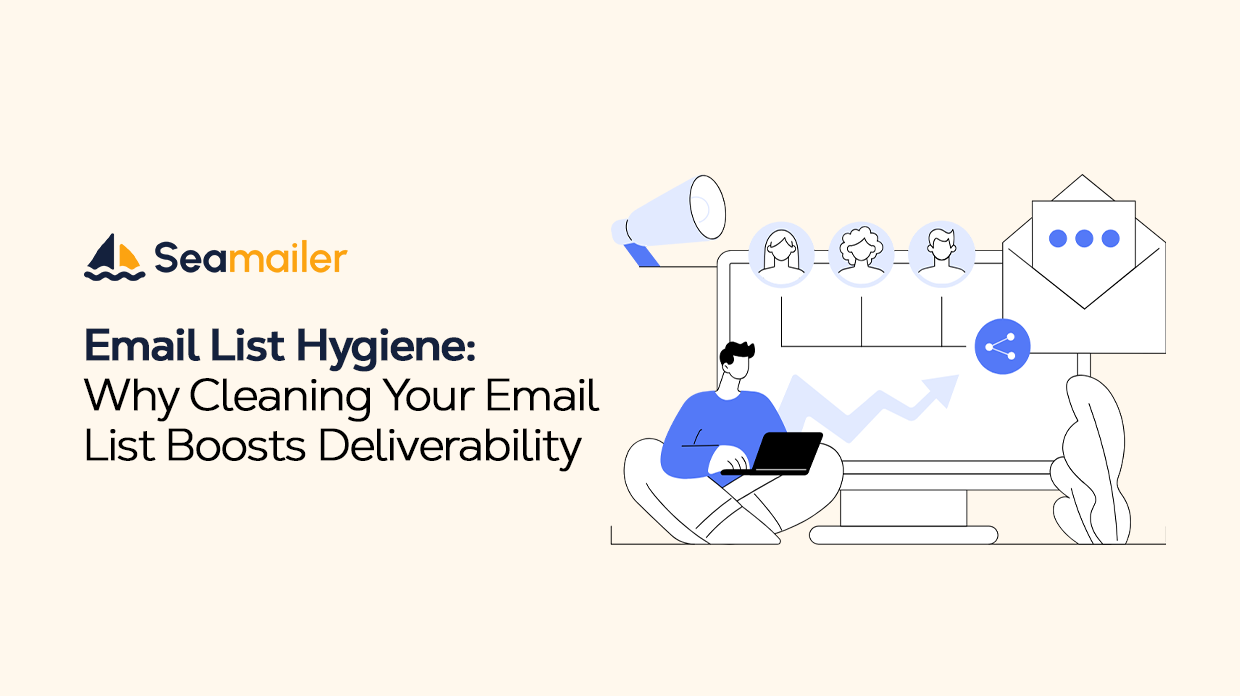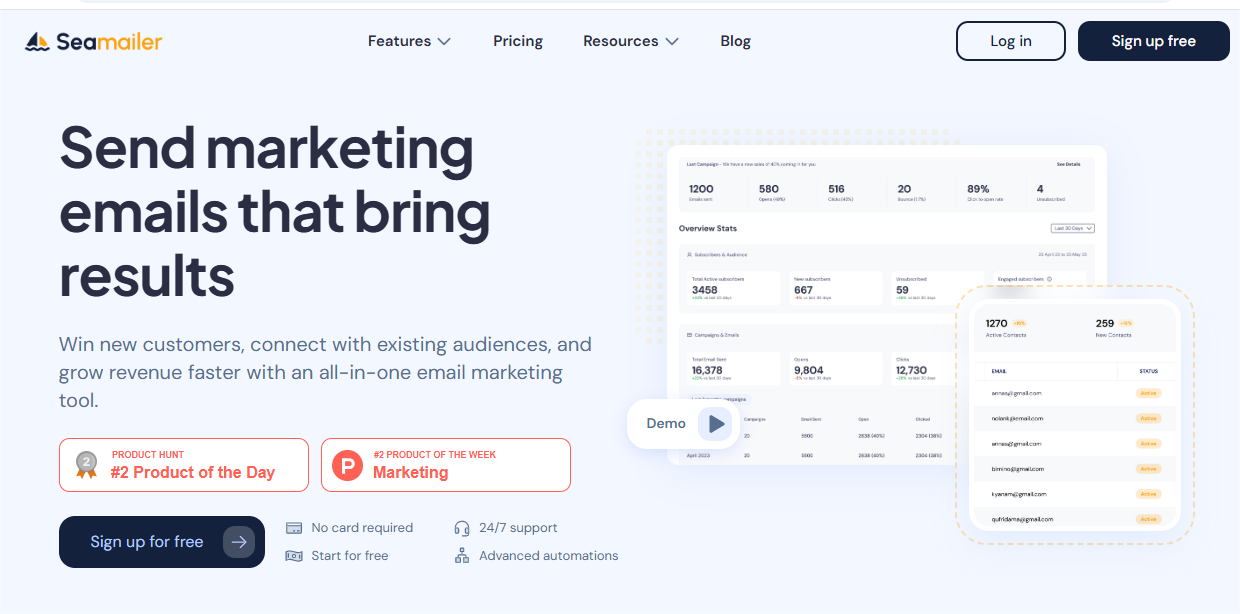Email List Hygiene: Why Cleaning Your Email List Boosts Deliverability

Let’s talk about a secret weapon that can completely transform your email marketing results. It's not a new AI tool, a fancy template, or a viral subject line. It’s something far more foundational, yet often overlooked: a clean email list.
Think of your email list like a garden. You can plant the most beautiful flowers, but if the soil is full of weeds, pests, and rocks, your flowers will never truly thrive. In the world of email marketing, those "weeds" are the inactive subscribers, the spambots, the invalid addresses, and the people who simply aren't interested anymore.
For years, many marketers operated under the "bigger is better" mindset. The goal was to grow the list at all costs, measuring success by the sheer number of subscribers. But in 2025, that approach is not just outdated—it’s actively harmful. A large, dirty email list is not a sign of success; it’s a liability that can tank your deliverability, damage your sender reputation, and ultimately eat away at your bottom line.
This isn't just about a one-time scrub. This is about building a habit of "email list hygiene" that keeps your list healthy, engaged, and ready to convert. If you’ve ever wondered why your open rates are low or why your emails are landing in the spam folder, your dirty list is likely the culprit.
This isn't a fluffy article about best practices you already know. This is a deep dive into the why and the how of email list hygiene, complete with actionable steps and real-world insights.
What’s Lurking in Your List? The Anatomy of a "Bad" Contact
Before we get into the cleaning process, you need to understand what you’re looking for. A "bad" contact isn't just an uninterested subscriber. It’s a variety of issues, each with its own negative impact on your email program.
1. The Hard Bounces: This is the most straightforward problem. A hard bounce occurs when an email is permanently undeliverable. This could be due to a fake email address, a typo in the address, or an email account that no longer exists. A hard bounce tells the email service provider (ESP) that this address will never work. Sending to hard bounces repeatedly is a huge red flag to ESPs like Gmail and Outlook, and it can quickly get your domain flagged as a spammer.
2. The Soft Bounces: A soft bounce is a temporary delivery issue. The recipient's mailbox might be full, the server might be down, or the message might be too large. While a soft bounce isn't as serious as a hard bounce, a pattern of soft bounces to the same address indicates an issue. If an address soft bounces multiple times over a period, it should be treated like a hard bounce and removed.
3. The Spamtrap: This is the silent killer. A spamtrap is an email address created by an Internet Service Provider (ISP) or a spam-fighting organization to catch spammers. These addresses are not used for anything else. If you send an email to one, it proves that you are using a poor list-building or list-management practice. Landing on a spamtrap can instantly get your IP address blacklisted, causing major deliverability issues for all your future emails.
4. The Inactive Subscriber: This is the trickiest one. These are real people who once subscribed, but they haven't opened or clicked on your emails in months, or even years. They're not bouncing, but their lack of engagement is a problem. ESPs track user engagement—opens, clicks, replies, and even if they move your email to a specific folder. Low engagement signals to the ESP that your content isn't relevant or valuable, and they start to penalize you by sending your emails to the spam folder, even for your active subscribers.
5. The Spam Complainers: These are subscribers who click the "mark as spam" button. A single spam complaint isn’t the end of the world, but a high complaint rate is a serious issue. It tells ESPs that your list is not opt-in, or that your content is unsolicited. A high spam complaint rate can lead to your account being suspended or even shut down by your email service provider.
Why a Dirty List Harms Your Business
The negative impact of a dirty email list goes far beyond just vanity metrics. It directly affects your bottom line.
- Lower Deliverability Rates: This is the most immediate consequence. ESPs (Email Marketing Service Providers) like Seamailer use sophisticated algorithms to decide whether your email lands in the inbox or the junk folder. They look at your sender reputation, which is a score based on your history of bounces, spam complaints, and overall engagement. A dirty list sends your sender reputation plummeting. As a result, even your best emails, sent to your most loyal subscribers, can end up in the spam folder.
- Wasted Resources: Every email you send costs money, whether in terms of platform fees (most providers charge by list size or email volume) or the time it takes to create and manage campaigns. Why would you spend money and effort sending emails to addresses that don't exist, spamtrap addresses, or people who haven't engaged in years? It’s a waste of time and money.
- Inaccurate Analytics: A dirty list messes up all your data. Your open rates, click-through rates, and conversion rates are all skewed because a large portion of your list isn't even receiving your emails. This leads to poor decision-making and a misunderstanding of what’s actually working.
- Damaged Brand Reputation: Sending emails that are consistently flagged as spam can damage your brand's reputation with ISPs and ESPs. In a worst-case scenario, this can lead to your emails being permanently blocked, shutting down one of your most effective marketing channels.
The "How-To" of Email List Hygiene: A Step-by-Step Guide
Cleaning your list is not a one-time event; it's a recurring process that should be built into your email marketing strategy.
Step 1: The Initial Scrub (The Big Clean)
If you've never cleaned your list, start with a comprehensive scrub. This involves removing all hard bounces immediately. Your email service provider should handle this automatically, but it's worth checking to make sure. Next, identify and remove all addresses that have soft bounced multiple times. These are unlikely to ever be delivered.
Step 2: The Re-Engagement Campaign
This is where you tackle the inactive subscribers. Instead of just deleting them, give them one last chance to re-engage. Create a specific, compelling email campaign that’s designed to get their attention. The subject line should be clear and direct, something like "Do you still want to hear from us?" or "We miss you! A quick check-in."
The body of the email should clearly state why you're reaching out: you've noticed they haven't been engaging, and you want to make sure they still want to be on your list. Offer them a clear choice: a button to click that says "Yes, I want to stay subscribed" or simply a notice that if they don't engage, they'll be removed.
Step 3: The Unsubscribe Process
After the re-engagement campaign, it’s time to part ways. Anyone who didn’t engage with your last-ditch effort should be removed from your main mailing list. You can segment them into a separate list for a few more months just in case, but for all practical purposes, they are no longer an active part of your audience.
Step 4: The Ongoing Maintenance (The Daily Clean)
This is the most important step. List hygiene should be a continuous process, not a biannual chore.
- Double Opt-In: Implement a double opt-in process for all new subscribers. This requires new sign-ups to click a confirmation link in an email to verify their address. This simple step is the single most effective way to prevent spamtrap and fake emails from ever making it onto your list.
- Monitor Your Analytics: Pay close attention to your deliverability rate, open rate, and spam complaint rate. If you see a sudden spike in bounces or complaints, investigate immediately.
- Segment and Conquer: The most effective lists are segmented. Instead of sending a single email to your entire list, create segments based on engagement. Send your most valuable content to your most active subscribers. This keeps them engaged and signals to ESPs that your list is high-quality.
- Periodically Remove Inactives: Set a recurring schedule to identify and remove inactive subscribers. Some businesses do this quarterly, others every six months. The key is to be consistent.

How a Platform Like Seamailer Makes List Hygiene Effortless
This all sounds like a lot of work, right? Manually tracking bounces, spam complaints, and engagement can be a full-time job. This is where a modern email marketing platform like Seamailer becomes an invaluable tool.
Seamailer has robust features specifically designed to help you maintain a healthy list without the manual hassle.
- Automated Hard Bounce Removal: Seamailer automatically identifies and removes hard-bouncing email addresses from your list. This is a critical feature that protects your sender reputation from day one.
- Advanced Segmentation: Its powerful segmentation tools allow you to easily create lists of subscribers who haven't opened an email in a specific timeframe (e.g., 90 days). This makes it simple to run those crucial re-engagement campaigns and then remove the non-responders.
- Real-Time Analytics: Seamailer provides a clear, real-time view of your deliverability, open rates, click rates, and spam complaints. You can quickly spot issues and take action before they become a major problem.
- Seamless Double Opt-In: The platform makes it easy to set up a double opt-in process, ensuring that every new subscriber is a valid, engaged contact.
By using a tool that automates the tedious parts of list hygiene, you can focus on what really matters: creating incredible content that your active subscribers will love.
Conclusion
A clean email list is not about having the biggest list; it’s about having the best list. It’s about prioritizing quality over quantity. By dedicating time and effort to email list hygiene, you are not just tidying up your data—you are building a stronger, more profitable, and more sustainable email marketing program.
Stop sending emails into a void of hard bounces and disinterested subscribers. Start sending them to a list of engaged, enthusiastic people who are genuinely excited to hear from you. Your deliverability, your sender reputation, and your bottom line will thank you.

